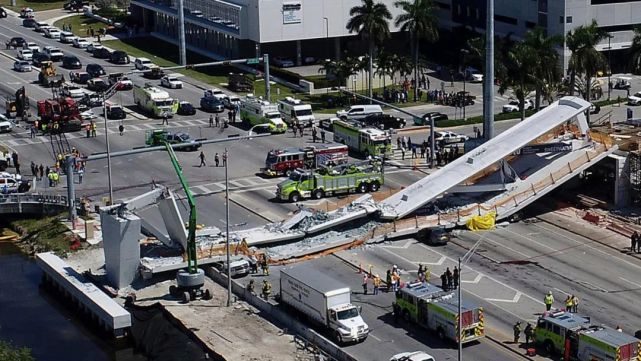
The U.S. Environmental Protection Agency recently issued a proposal that would require the nation's water systems to replace all lead-contaminated drinking water lines within the next 10 years, an important step in fulfilling the Biden administration's previous promise. Back in November 2021, the Biden administration signed the Infrastructure Investment and Jobs Act, which contains $15 billion in dedicated funding to support the replacement of lead water pipes across the United States. More than two years later, the EPA has only "proposed" to begin the work.
In fact, the problem of lead pipes has plagued Americans for a long time. From the 20th century to the 1970s, developed countries such as the United States, Britain and Germany often chose lead water pipes when building cities. This is because lead water pipes have physical properties such as pressure resistance and are cheap. However, with the increase of service life, the lead in the lead pipe will gradually penetrate into the tap water, resulting in serious lead content in the tap water; Lead is a toxic substance, and excessive lead can damage the nervous system and affect children's development. Several major cities in the United States have been exposed to lead pipe poisoning incidents: in 2015, Michigan "Flint water crisis", hundreds of children's blood lead exceeded the standard; In 2021, the city of Benton Harbor, Michigan, was found to have excessive levels of lead in tap water from several supply lines.
America's infrastructure problems run deeper than just lead pipes. Also on the drinking water safety front, a U.S. Geological Survey report released in early July found that nearly half of tap water in the United States contains at least one type of toxic synthetic organic fluoride because of aging sewage systems. On November 22, a train derailed in southeastern Kentucky, causing a leak of dangerous chemicals, sparking a fire and releasing toxic fumes. A similar accident happened in Ohio in February. The Hawaiian fires in August killed nearly 100 people on the island of Maui, and many of the victims' families are still suing the local power company in a class-action lawsuit, arguing that the aging power facilities played a major role in the fires.

According to statistics, nearly a quarter of the Bridges in the United States have problems, more than half of the fatal traffic accidents are related to poor road infrastructure, the average speed of passenger trains is only half that of Europe, and more than 70% of the electrical infrastructure is severely aging. The American Society of Civil Engineers has given the U.S. infrastructure an average grade of "D+," a rating that means infrastructure conditions are "mostly below par," exhibit "significant deterioration," and have a "substantial risk of failure." Why does the United States, the world's largest economy, have such a prominent infrastructure problem that it is so difficult to change lead pipes?
The first is money. At first glance, this is puzzling, given the $6.1 trillion in fiscal 2023 spending and a deficit of nearly $1.7 trillion. In fact, infrastructure investment in the United States is largely financed at the local and state levels, with only 25% of public infrastructure investment coming from the federal government. Both federal and local and state investment in urban infrastructure is declining. According to the 2021 forecast assessment of the American Society of Civil Engineers, the United States faces an infrastructure investment gap of nearly $2.6 trillion over the next 10 years, but the Infrastructure Investment and Jobs Act contains only $550 billion of new investment, of which $15 billion is used to replace lead water pipes. However, some industry associations estimate that it could easily cost $50 billion to complete the replacement of lead pipes. It is unclear whether the federal government will allocate additional funds after the $15 billion is spent.
Second, the so-called decentralization system in the United States has brought about the "cutting and cutting" relationship between federal, local and state governments, which is also one of the reasons for the complex decision-making process of infrastructure renewal and the slow progress of related projects. For example, Chicago has the most lead water pipes in the United States, about 400,000, and the water commissioner has said that replacing the city's lead pipes could take 40 years and cost at least $12 billion. But federal money is unlikely to tilt much toward Chicago for that, and the Rust Belt city itself does not have the capacity to commit additional funds.
In addition, "domestic protectionism" has made it more difficult to upgrade the US infrastructure. Washington is now intent on reshaping the global industrial chain, and it is also a closed-door mentality in the field of infrastructure. The Infrastructure Investment and Employment Law emphasizes the principle of localization of the industrial chain. The Biden administration also issued an executive order requiring federally funded projects to purchase raw materials such as steel that must be made in the United States. And strong unions are likely to drive labor costs exponentially higher in the United States, as evidenced by strikes this fall by auto workers and health care workers. Infrastructure costs in the United States have long been higher than those of similar projects in Europe or Asia, and restrictions on the source of materials imposed by "Buy American" provisions, coupled with high wages for workers, have undoubtedly led to rising costs for infrastructure renewal projects such as replacing lead water pipes, which have been delayed so much that fundamental solutions are difficult to find.

Since 2025, the conflict between the United States and Europe over the governance of the digital economy has continued to escalate.
Since 2025, the conflict between the United States and Euro…
When German Chancellor Mertz officially announced that he w…
On December 3rd local time, the copper price on the London …
The European Commission announced a new economic security s…
The European Commission announced a new economic security s…
For nearly a year, US President Donald Trump has launched a…